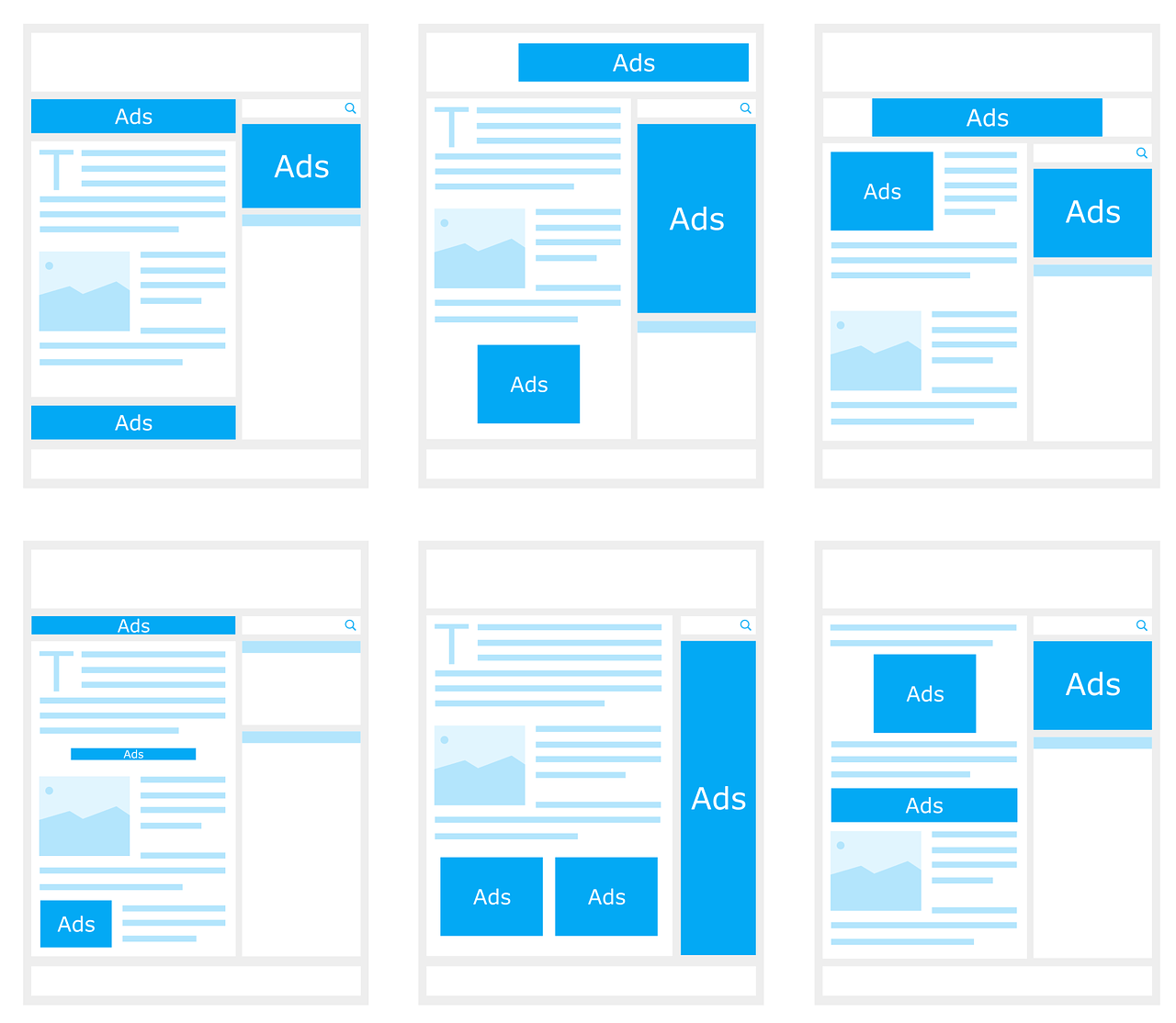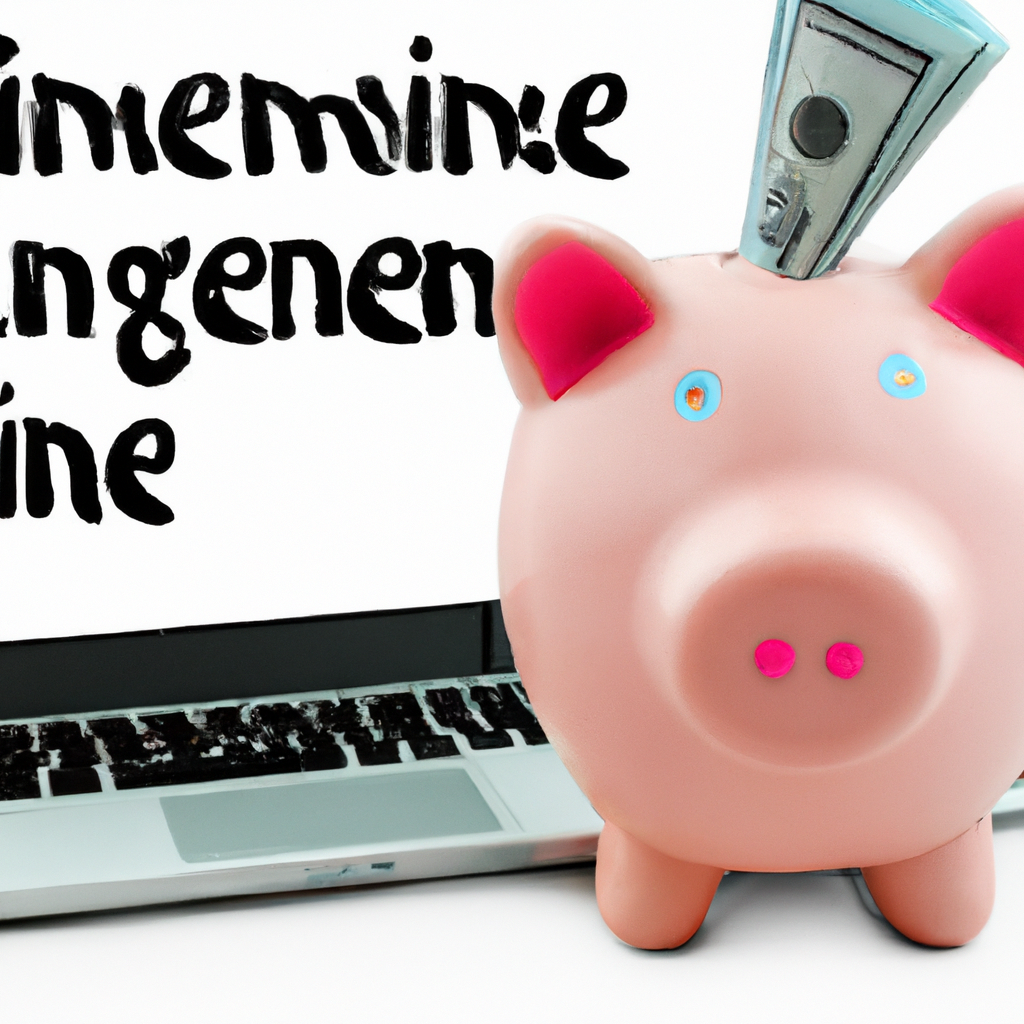So, you’ve poured all your creativity, passion, and time into creating an incredible blog or website that reflects who you are and what you believe in. Now, you may be wondering, “How can I monetize my blog or website?” Well, look no further because we have got you covered! In this article, we will explore some effective strategies and tips on how to turn your online platform into a profitable venture. From advertising and sponsored content to affiliate marketing and selling products or services, we will delve into various options that can help you generate revenue while still staying true to your unique voice and vision. Get ready to unlock the potential of your blog or website and start making money doing what you love!

1. Affiliate Marketing
Affiliate marketing is one of the most popular ways to monetize your blog or website. It involves partnering with companies or brands and promoting their products or services through affiliate links. When a visitor clicks on your affiliate link and makes a purchase, you earn a commission. To get started with affiliate marketing, you need to choose the right affiliate programs.
1.1 Choosing Affiliate Programs
When choosing affiliate programs, it’s important to consider the relevance of the products or services to your audience. Look for programs that align with your niche and offer high-quality products. It’s also important to consider the commission rates and payment terms. Some popular affiliate networks to consider are Amazon Associates, ShareASale, and Commission Junction.
1.2 Creating High-Quality Content
Creating high-quality content is crucial for the success of your affiliate marketing efforts. Your content should be informative, engaging, and valuable to your readers. By providing helpful information and addressing their needs, you can build trust and credibility with your audience. This will increase their likelihood of clicking on your affiliate links and making a purchase.
1.3 Incorporating Affiliate Links
Incorporating affiliate links into your content should be done strategically and naturally. Avoid spamming your readers with too many affiliate links, as it can come across as pushy and decrease the trust you’ve built. Instead, focus on integrating affiliate links where they add value and are relevant to the content. For example, you can include them in product reviews, tutorials, or recommendations.
1.4 Tracking and Analyzing Performance
To effectively monetize your blog or website with affiliate marketing, you need to track and analyze your performance. This involves using tracking tools, such as Google Analytics, to monitor the number of clicks, conversions, and revenue generated from your affiliate links. By analyzing this data, you can identify which affiliate programs and strategies are working best and make adjustments to optimize your earnings.
1.5 Optimizing Affiliate Marketing Strategy
Optimizing your affiliate marketing strategy is crucial for maximizing your earnings. This can be achieved through various methods, such as split testing different affiliate programs, optimizing your content for search engines, and experimenting with different promotional strategies. Stay up to date with industry trends and continuously monitor and adjust your strategy to ensure ongoing success with affiliate marketing.
2. Display Advertising
Display advertising involves partnering with ad networks to display ads on your blog or website. These ads can be in various formats, such as banners, pop-ups, or native ads. Here’s how you can effectively monetize your blog or website with display advertising.
2.1 Signing Up for Ad Networks
To get started with display advertising, you need to sign up for ad networks. Some popular ad networks include Google AdSense, Media.net, and Ezoic. When choosing an ad network, consider factors such as ad quality, payout rates, and the ease of integration with your website.
2.2 Placing Ads on Your Blog or Website
Once you’ve signed up for an ad network, you can start placing ads on your blog or website. It’s important to strategically place the ads to maximize visibility and engagement. Consider placing ads above the fold, within the content, and in the sidebar. However, be mindful of not overwhelming your readers with too many ads, as it can negatively impact the user experience.
2.3 Optimizing Ad Placement for Higher Revenue
To optimize your revenue from display advertising, you need to experiment and optimize your ad placement. This involves testing different ad sizes, positions, and formats to determine what works best for your audience and generates the highest earnings. Additionally, consider using responsive ad units to ensure optimal display across different devices.
2.4 Experimenting with Different Ad Formats
To keep your display advertising strategy fresh and engaging, it’s important to experiment with different ad formats. This can include trying out native ads, video ads, or interactive ads. By diversifying your ad formats, you can cater to different preferences and increase the chances of attracting clicks and conversions.
2.5 Monitoring and Analyzing Ad Performance
To effectively monetize your blog or website with display advertising, you need to monitor and analyze the performance of your ads. Most ad networks provide performance metrics, such as click-through rates (CTR) and earnings per click (EPC). By analyzing this data, you can identify which ad formats and placements are performing best and make adjustments to optimize your ad revenue.
3. Sponsored Content
Sponsored content involves partnering with sponsors to create and publish content that promotes their products or services. Here’s how you can monetize your blog or website through sponsored content.
3.1 Identifying Potential Sponsors
To monetize your blog or website through sponsored content, you need to identify potential sponsors. Look for companies or brands that align with your niche and target audience. Research their products or services and assess whether they would be a good fit for your audience and content.
3.2 Developing Engaging Sponsored Content
Once you’ve identified potential sponsors, you can start developing engaging sponsored content. This can include product reviews, sponsored blog posts, or sponsored social media posts. It’s important to maintain transparency and authenticity when creating sponsored content, ensuring that it aligns with your brand and provides value to your audience.
3.3 Pricing and Negotiating Sponsorships
When monetizing your blog or website through sponsored content, it’s crucial to determine your pricing and negotiate sponsorships effectively. Consider factors such as the reach and engagement of your blog or website, the time and effort required to create the content, and the value it will bring to the sponsor. It’s important to strike a balance between fair compensation and maintaining the trust and interest of your audience.
3.4 Properly Labeling and Disclosing Sponsored Content
To maintain transparency and comply with legal requirements, it’s important to properly label and disclose sponsored content. Clearly indicate that the content is sponsored and provide any necessary disclaimers or disclosures. This helps build trust with your audience and ensures that they are aware of any potential bias in the content.
3.5 Maintaining Transparency and Authenticity
When monetizing your blog or website through sponsored content, it’s crucial to maintain transparency and authenticity. Only partner with sponsors whose products or services you genuinely believe in and would recommend to your audience. It’s important to prioritize the trust and interests of your audience above monetary gain to ensure long-term success.
4. Online Courses and Digital Products
Creating and selling online courses and digital products is a popular way to monetize your expertise and knowledge. Here’s how you can effectively monetize your blog or website with online courses and digital products.
4.1 Identifying Market Demand
Before creating online courses or digital products, it’s important to identify market demand. Research your target audience’s needs, pain points, and preferences. Look for gaps or opportunities where your expertise can provide value and solutions. By understanding your audience and their demand, you can create products that are more likely to sell.
4.2 Creating High-Quality Online Courses
When creating online courses, it’s important to prioritize quality and deliver value to your students. Structure your courses in a logical and organized manner, provide clear and engaging video lessons, and offer supporting resources and materials. Consider using a platform or learning management system (LMS) to host and deliver your courses efficiently.
4.3 Promoting and Marketing Your Courses
To monetize your blog or website with online courses, you need to effectively promote and market them. Leverage your existing audience and platforms to create awareness and generate interest. Use various marketing channels, such as email marketing, social media, and webinars, to reach a wider audience and attract potential students.
4.4 Developing and Selling Digital Products
In addition to online courses, you can also monetize your blog or website by creating and selling digital products. This can include e-books, templates, guides, or software tools. Identify the specific needs or challenges of your audience and create digital products that provide practical solutions or value.
4.5 Leveraging Email Marketing for Course Sales
Email marketing is a powerful tool for monetizing your blog or website with online courses and digital products. Build an email list of engaged subscribers and regularly communicate with them to offer value and promote your courses and products. Implement effective email marketing strategies, such as segmentation, personalization, and automation, to maximize your course sales.

5. Membership and Subscription Models
Creating a membership or subscription model for your blog or website can provide recurring revenue and help you monetize your content. Here’s how you can effectively implement membership and subscription models.
5.1 Creating Exclusive Content for Members
To attract members and subscribers, it’s important to provide exclusive content that is not available to non-members. This can include bonus articles, in-depth tutorials, webinars, or access to a private community or forum. The content should offer additional value and be tailored specifically to the interests and needs of your members.
5.2 Determining Pricing and Membership Tiers
When implementing a membership or subscription model, it’s important to determine your pricing and membership tiers. Consider factors such as the value and exclusivity of the content, the resources required to produce it, and the perceived value by your audience. Offer different membership levels or tiers to cater to different budgets and preferences.
5.3 Using Membership Plugins and Platforms
To efficiently manage your membership or subscription model, consider using membership plugins or platforms. These tools can help automate the sign-up process, manage member accounts, and handle recurring payments. Some popular membership plugins and platforms include MemberPress, Wishlist Member, and Patreon.
5.4 Retaining and Engaging Members
To ensure the success of your membership or subscription model, it’s important to retain and engage your members. Continuously provide high-quality and valuable content, interact with your members through comments or a private community, and create a sense of belonging and exclusivity. Regularly ask for feedback and make improvements based on the needs and preferences of your members.
5.5 Continuously Evolving Offerings
To sustain and grow your membership or subscription model, it’s important to continuously evolve your offerings. Listen to the feedback and suggestions of your members and make updates or additions to your content or membership tiers accordingly. Stay up to date with industry trends and provide fresh and relevant content that keeps your members engaged and satisfied.
6. E-commerce and Product Sales
Setting up an online store and selling products directly from your blog or website can be a lucrative monetization strategy. Here’s how you can effectively monetize your blog or website with e-commerce and product sales.
6.1 Setting Up an Online Store
To start selling products directly from your blog or website, you need to set up an online store. Choose an e-commerce platform, such as Shopify or WooCommerce, that suits your needs and budget. Customize your store’s design to match your brand and optimize its functionality for a seamless shopping experience.
6.2 Identifying Profitable Products to Sell
To effectively monetize your blog or website with e-commerce, it’s important to identify profitable products to sell. Research your target audience’s preferences and interests, and look for products that align with your niche. Consider sourcing products from suppliers or manufacturers, or create your own unique products.
6.3 Optimizing Product Listings and Descriptions
To maximize your sales, optimize your product listings and descriptions. Use high-quality product images and provide detailed and accurate descriptions. Highlight the features and benefits of your products, and address any potential concerns or questions that your customers may have. Make it easy for customers to make a purchase by including clear pricing and shipping information.
6.4 Integrating Secure Payment Systems
To provide a secure and seamless shopping experience, integrate secure payment systems into your online store. Consider using popular payment gateways, such as PayPal or Stripe, to process transactions. Ensure that your customers’ personal and payment information is protected through SSL encryption and other security measures.
6.5 Providing Exceptional Customer Service
To build trust and loyalty with your customers, provide exceptional customer service throughout their shopping journey. Respond promptly to customer inquiries or concerns, offer personalized recommendations, and provide clear communication throughout the purchasing process. Strive to exceed your customers’ expectations and create a positive shopping experience that encourages repeat purchases.

7. Sponsored Reviews and Collaborations
Sponsored reviews and collaborations involve partnering with brands or companies to review their products or collaborate on content. Here’s how you can monetize your blog or website through sponsored reviews and collaborations.
7.1 Establishing Credibility and Expertise
To attract sponsorship opportunities for reviews and collaborations, it’s important to establish credibility and expertise in your niche. Create high-quality and valuable content that showcases your knowledge and authority. Build a strong online presence and engage with your audience to establish trust and credibility.
7.2 Connecting with Potential Sponsors
To monetize your blog or website through sponsored reviews and collaborations, you need to connect with potential sponsors. Reach out to brands or companies that align with your niche and target audience. Showcase your previous work and the value you can provide through reviews or collaborations.
7.3 Conducting Honest and Objective Reviews
When conducting sponsored reviews, it’s crucial to maintain honesty and objectivity. Provide an unbiased evaluation of the product or service, highlighting its strengths and weaknesses. Be transparent with your audience about the sponsorship and any potential biases, ensuring that they can trust your reviews.
7.4 Negotiating Compensation and Deliverables
When monetizing your blog or website through sponsored reviews and collaborations, it’s important to negotiate compensation and deliverables effectively. Consider factors such as the reach and engagement of your blog or website, the time and effort required to conduct the review or collaboration, and the value it will bring to the sponsor. Ensure that both parties are clear on expectations and deliverables.
7.5 Maintaining Ethical Standards
To ensure the success of your sponsored reviews and collaborations, it’s crucial to maintain ethical standards. Only partner with brands or companies whose products or services align with your values and that you genuinely believe in. Disclose any sponsorships or affiliations transparently to your audience to maintain trust and authenticity.
8. Donations and Crowdfunding
Monetizing your blog or website through donations and crowdfunding involves seeking financial support from your audience and community. Here’s how you can effectively implement donations and crowdfunding.
8.1 Implementing Donation Buttons or Widgets
To enable donations on your blog or website, implement donation buttons or widgets. There are various tools and platforms, such as PayPal Donate or Ko-fi, that allow you to easily integrate donation options. Customize the design and placement of the buttons or widgets to encourage donations from your audience.
8.2 Sharing Personal Stories and Goals
To encourage donations and crowdfunding support, share personal stories and goals with your audience. Create a compelling narrative that highlights the purpose or cause behind the donations or crowdfunding campaign. Connect emotionally with your audience and explain how their support can make a difference or help you achieve your goals.
8.3 Engaging with Your Community
To effectively monetize your blog or website through donations and crowdfunding, it’s important to engage with your community. Interact with your audience through comments, social media, or live chat. Show appreciation for their support and create a sense of belonging and community.
8.4 Setting Up Crowdfunding Campaigns
To further monetize your blog or website, set up crowdfunding campaigns for specific projects or initiatives. Use dedicated crowdfunding platforms, such as Kickstarter or Indiegogo, to showcase your campaign and reach a wider audience. Clearly explain your project, its goals, and the impact it can make.
8.5 Showing Appreciation to Donors or Supporters
To maintain the support and trust of your donors or supporters, show appreciation and gratitude. Follow up with personalized thank-you messages or emails, provide regular updates on the progress of your project or initiative, and offer exclusive rewards or perks to acknowledge their contributions. Make your donors or supporters feel valued and involved in your journey.

9. Selling Ad Space Directly
Selling ad space directly on your blog or website involves partnering directly with advertisers to display their ads. Here’s how you can effectively monetize your blog or website by selling ad space directly.
9.1 Building Strong Website Traffic and Audience
To attract direct advertisers, it’s important to build a strong and engaged website traffic and audience. Create high-quality content that resonates with your target audience and incorporates SEO strategies to increase organic traffic. Engage with your audience through comments, social media, or newsletters to build a loyal following.
9.2 Identifying Potential Advertisers
When monetizing your blog or website through selling ad space directly, identify potential advertisers that align with your niche and target audience. Research companies or brands that are relevant to your content and audience’s interests. Consider reaching out to them directly or create a dedicated “Advertise With Us” page on your website.
9.3 Creating an Advertise With Us Page
To attract direct advertisers, create an “Advertise With Us” page on your blog or website. This page should provide information about your website’s traffic, audience demographics, and the available ad spaces or formats. Clearly indicate the benefits and value that your blog or website can offer to potential advertisers.
9.4 Negotiating Ad Placements and Rates
When selling ad space directly, it’s important to negotiate ad placements and rates effectively. Consider factors such as the visibility and engagement of the ad placements, the duration of the ads, and the specific requirements or preferences of the advertisers. Ensure that both parties are clear on the expectations and deliverables.
9.5 Managing and Tracking Direct Advertisements
To effectively monetize your blog or website through direct advertisements, it’s important to manage and track them efficiently. Use ad management tools or plugins to easily handle the placement and rotation of ads. Implement tracking tools, such as Google Analytics, to monitor the performance and effectiveness of the direct advertisements.
10. Consulting and Services
Monetizing your blog or website through consulting and services involves leveraging your expertise and knowledge to provide value to clients. Here’s how you can effectively implement consulting and services.
10.1 Identifying Your Areas of Expertise
To monetize your blog or website through consulting and services, identify your areas of expertise. Determine the skills or knowledge that differentiate you and that can provide value to clients. Consider your previous experience, education, or certifications to establish your credibility in the consulting field.
10.2 Crafting a Consultation or Service Offering
Create a consultation or service offering that clearly outlines the value and benefits you can provide to clients. Clearly define your services, packages, or deliverables. Highlight your unique approach or methodologies and explain how they can help clients achieve their goals or solve their problems.
10.3 Promoting Your Consulting Business
To attract clients for your consulting business, it’s crucial to effectively promote and market your services. Leverage your blog or website to showcase your expertise and provide valuable content related to your consulting niche. Utilize various marketing channels, such as social media, guest posting, or online communities, to reach a wider audience and generate leads.
10.4 Providing Value and Delivering Results
To ensure the success and profitability of your consulting business, it’s important to provide value and deliver results to your clients. Prioritize client satisfaction and ensure that your services address their specific needs and goals. Establish clear communication, set realistic expectations, and consistently exceed client expectations to build long-term relationships and generate referrals.
10.5 Building Long-Term Client Relationships
To sustain and grow your consulting business, focus on building long-term client relationships. Implement strategies such as regular check-ins, follow-ups, and ongoing support to maintain engagement and retention. Offer additional services or upsells to clients who have already experienced the value of your consulting services. Leverage client testimonials and referrals to attract new clients and establish a positive reputation in your field.




